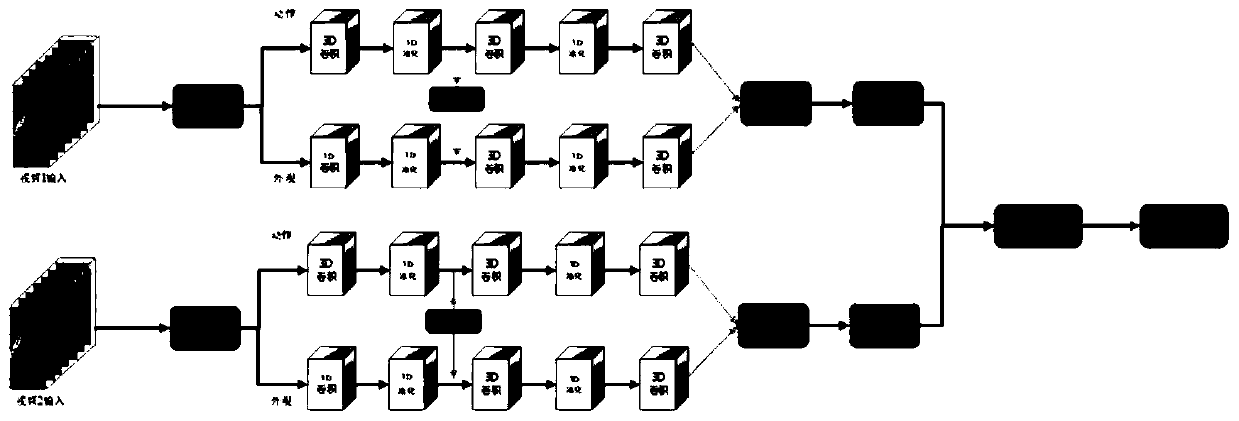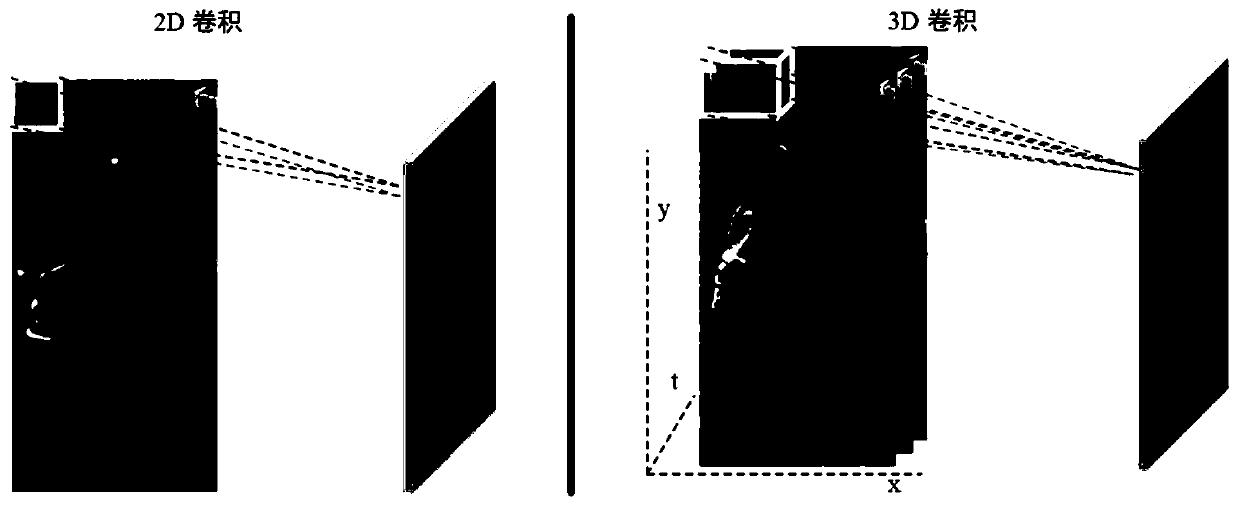Video pedestrian re-identification method based on twin double-flow 3D convolutional neural network
A technology of convolutional neural network and pedestrian re-identification, applied in biological neural network models, neural learning methods, neural architectures, etc., can solve the problems of low recognition, achieve high recognition accuracy, accurate extraction, and realize urban intelligence Effect
- Summary
- Abstract
- Description
- Claims
- Application Information
AI Technical Summary
Problems solved by technology
Method used
Image
Examples
Embodiment Construction
[0033] The present invention will be described in detail below in conjunction with the accompanying drawings and specific embodiments. This embodiment is carried out on the premise of the technical solution of the present invention, and detailed implementation and specific operation process are given, but the protection scope of the present invention is not limited to the following embodiments.
[0034] Such as figure 1 As shown, a video pedestrian re-identification method based on twin-stream 3D convolutional neural network, including:
[0035] Step S1: Extract each frame of pedestrian video 1 and pedestrian video 2 into optical flow-x feature map, optical flow-y feature map, grayscale feature map, horizontal Coordinate gradient feature map and vertical coordinate gradient feature map;
[0036] Step S2: Use the optical flow-x feature map and optical flow-y feature map extracted in step S1 as the input of the action branch to extract pedestrian action information, grayscale ...
PUM
 Login to View More
Login to View More Abstract
Description
Claims
Application Information
 Login to View More
Login to View More - R&D
- Intellectual Property
- Life Sciences
- Materials
- Tech Scout
- Unparalleled Data Quality
- Higher Quality Content
- 60% Fewer Hallucinations
Browse by: Latest US Patents, China's latest patents, Technical Efficacy Thesaurus, Application Domain, Technology Topic, Popular Technical Reports.
© 2025 PatSnap. All rights reserved.Legal|Privacy policy|Modern Slavery Act Transparency Statement|Sitemap|About US| Contact US: help@patsnap.com



